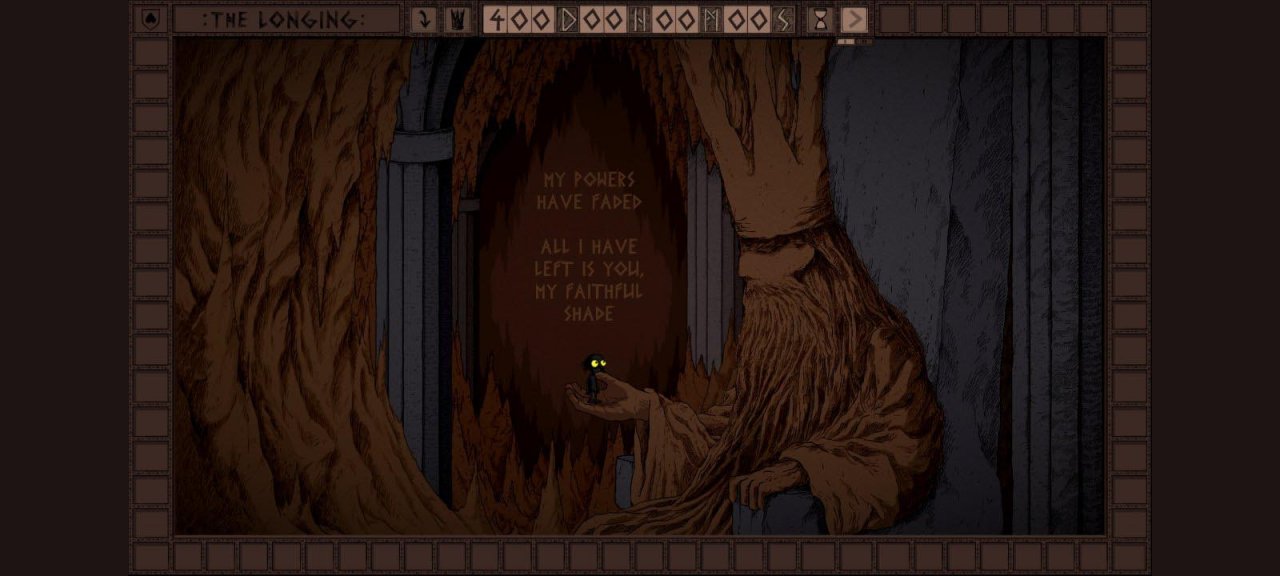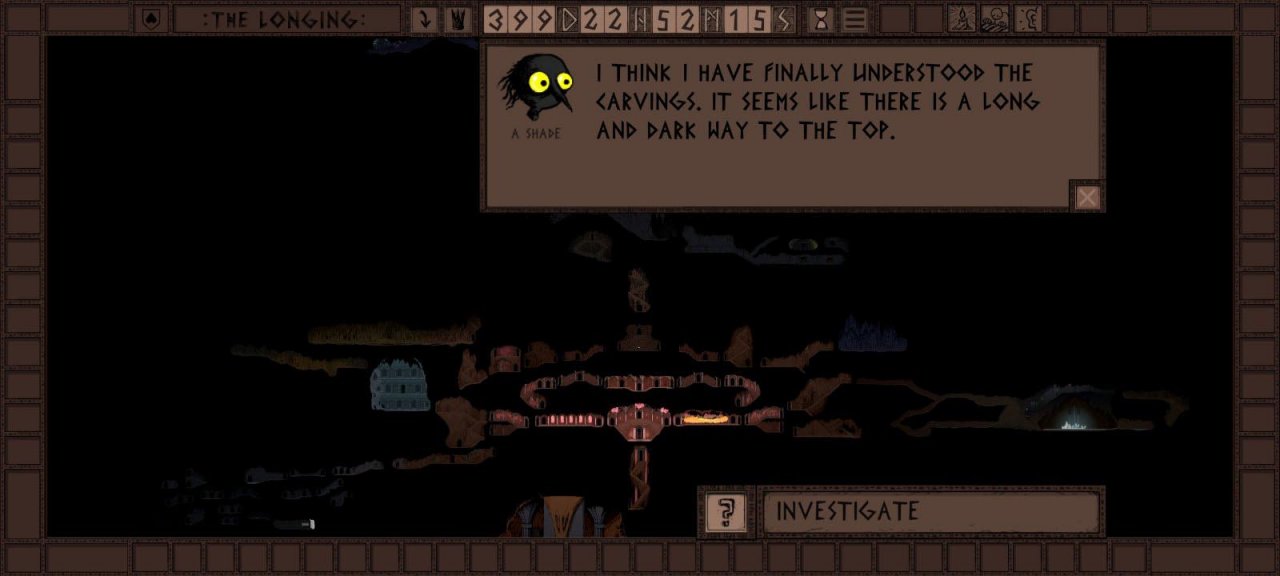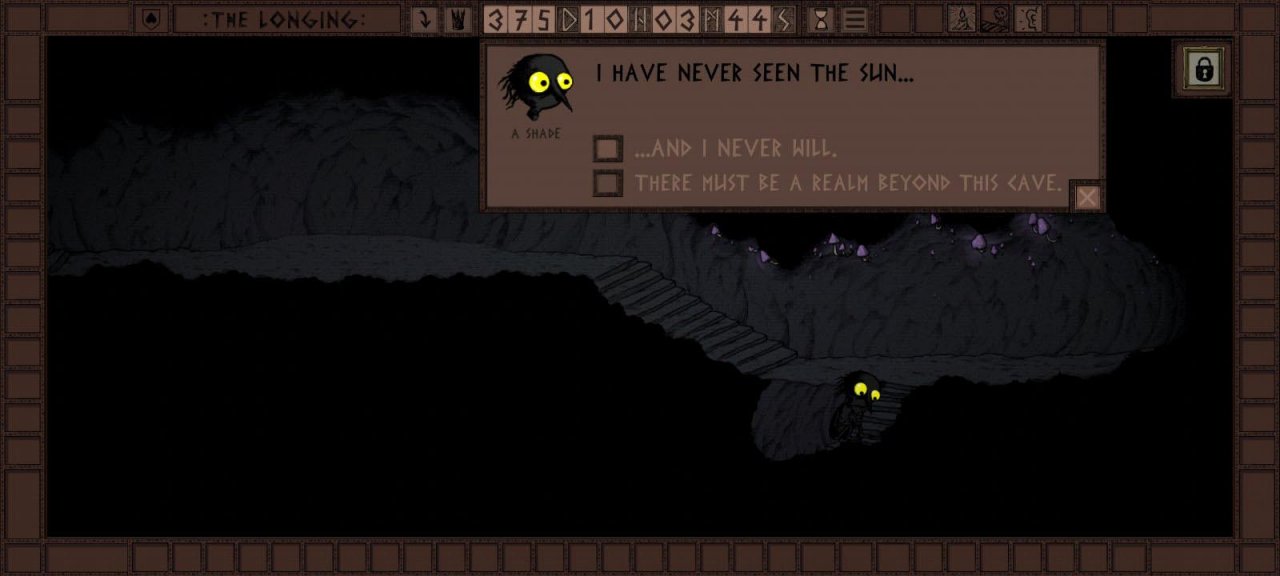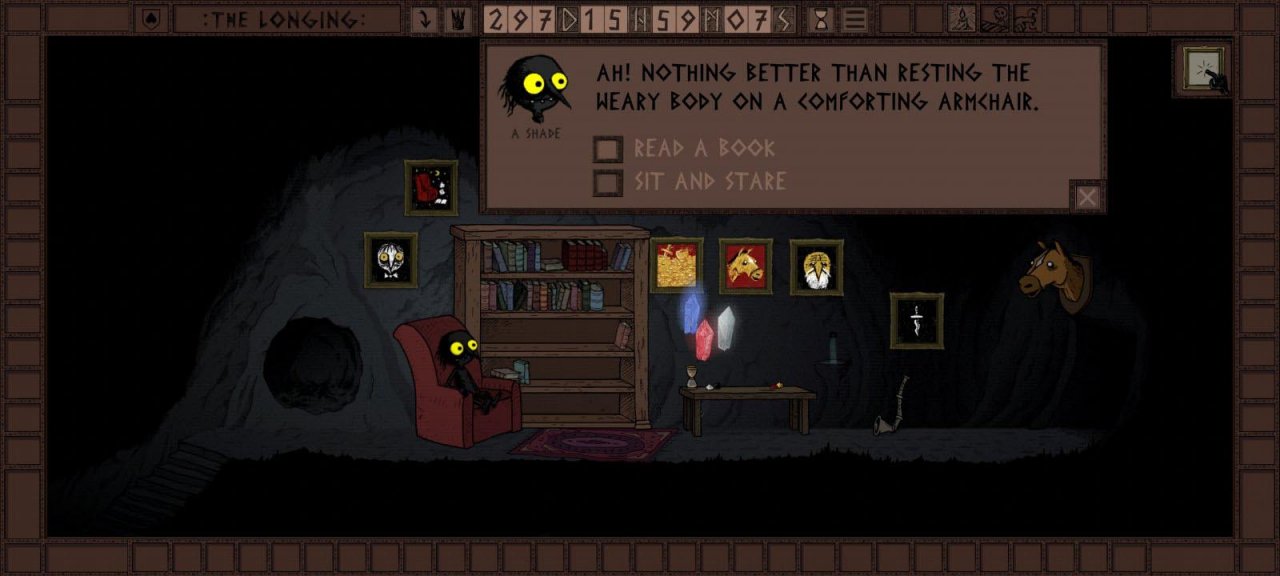Very few games can tackle the depth of life’s meaning in a way that resonates with players long after the credits roll, and even fewer can do that without the need for any fancy voiceovers and emotional cutscenes. This is precisely why it simply blew my mind the way The Longing executed this so flawlessly – and all it took was an unnamed shadow and its big yellow eyes to help me see the truth.
Made to be played for 400 IRL days, The Longing is a quirky cross between an idle game and a point-and-click adventure, spliced with rich narrative tidbits in between and presented with a stylised Burton-esque aesthetic. I’m not even going to pretend to nitpick about this game – it touched me in ways I didn’t expect it to and gave a whole new meaning to the titular longing at the end of it all.
Table of contents:
THE LONGING STORY
You start off as an aptly named Shade, tasked with the seemingly insignificant but truthfully gargantuan responsibility of awakening your king from his 400-day slumber deep underneath the surface. The game starts with the king taking his rest, after which, you’re free to roam the labyrinthian depths of the cave with only one rule: don’t leave.

All is not lost, however. As an unnamed servant, stripped of your identity and with no knowledge of the fabled surface world, you’ll wander around in the darkness discovering bits and pieces of life outside the cavernous walls. You’ll stitch together what once was and what might have been, all while building your own personality, opinions, and inner desires along the way.
While this might seem incredibly tedious at first glance, there really is a treasure trove of wonders to be discovered within the caves, with unexpected twists and turns that might just take up all your time before those 400 days are through. Some doors take two hours to fully open, while some passageways will take anywhere from 14 days to a full month before you can access them. Whether you’re patiently waiting for little droplets of water to fill up a chasm or letting a spidery friend weave a sturdy enough web for you to climb on, there’s always something to wait for in The Longing – and yes, it’s all worth the wait.
Iris and the Giant (Utomik) review – “Engaging gameplay, an even more engaging story”
THE GAMEPLAY OF THE LONGING
Playing the waiting game here, so to speak, is quite literal. For one thing, you can’t fast-travel to different locations, nor can you speed up the Shade’s pace when it’s walking. You’ll trudge along at a snail’s pace, because what’s the hurry when you’ve got 400 days to spare?

The idle nature here comes in the form of the actual passage of time even when you’re logged off – essentially, you can even start the game and never come back to it until 400 days have passed. You’ll have a limited number of slots where you can “remember” a certain spot within the cave, but that’s as far as you can go when it comes to mobility. You really have to painstakingly walk to where you want to go – a lesson in patience and the lost art of waiting in itself.
A little over 6 weeks into this and I’ve finally run into one of the possible endings for the game. I admit I dug through some guides online to get to certain events, but the online community has been kind enough to post spoiler-free guides that still leave plenty of room for self-exploration.
It’s hard to explain how exciting this game actually is without spoiling anything – because, really, the things you discover and the events you trigger are what makes the game shine – but suffice it to say that it offers that same kind of exhilaration you’ll commonly experience with old-school point-and-click games.

Doing something can trigger something else, and your choices matter to a certain extent given the game’s multiple endings. There are puzzles you need to solve as well, and the answers won’t be obvious – you really have to pay attention to things around you and to the random thoughts of the Shade itself to progress through the game.
Most of the achievements you get have something to do with beautifying your tiny corner of the cave – a small space you can safely call your home. Over time, depending on the events you trigger and items you collect, you can make your home cosier with paintings, music, decors, warm fires, and even further expansions that include a bed, a garden, and a toilet. It goes to show you how simple wants can be so much more satisfying when you don’t have the distractions of the outside world vying for your attention all the time.
WHAT’S THE APPEAL?
This, in essence, is what makes the game so darn beautiful. Everything you do here is an exercise in simplicity, and while the game makes it seem like the Shade is learning about the world we live in today, on the contrary, it was really me who felt like I was learning from the Shade. Its thoughts, its feelings, its books, its desires…everything is a reflection of human life. I can’t, for the life of me, believe how effective this Shade can be when it comes to the philosophical and transcendent stuff – and all this without it having to show an iota of emotion on its expressionless face (it can smile a toothy grin though, which is oddly adorable).

I’ve never encountered such a profound experience in such a simple package before. The Longing effectively takes everything you think you know about video games in this fast-paced world and serves as an anti-thesis – it even makes a mockery of mobile games in that it simply refuses to add any so-called “quality-of-life” features that I’d normally look for in on-the-go games.
Lost in Play review – “Nothing beats the power of childlike imagination”
There are no save points, no shortcuts, no convenient “mobile-optimised” buttons here. All there is is the waiting and the infinite possibilities that go along with it – and in this case, that’s totally okay.
